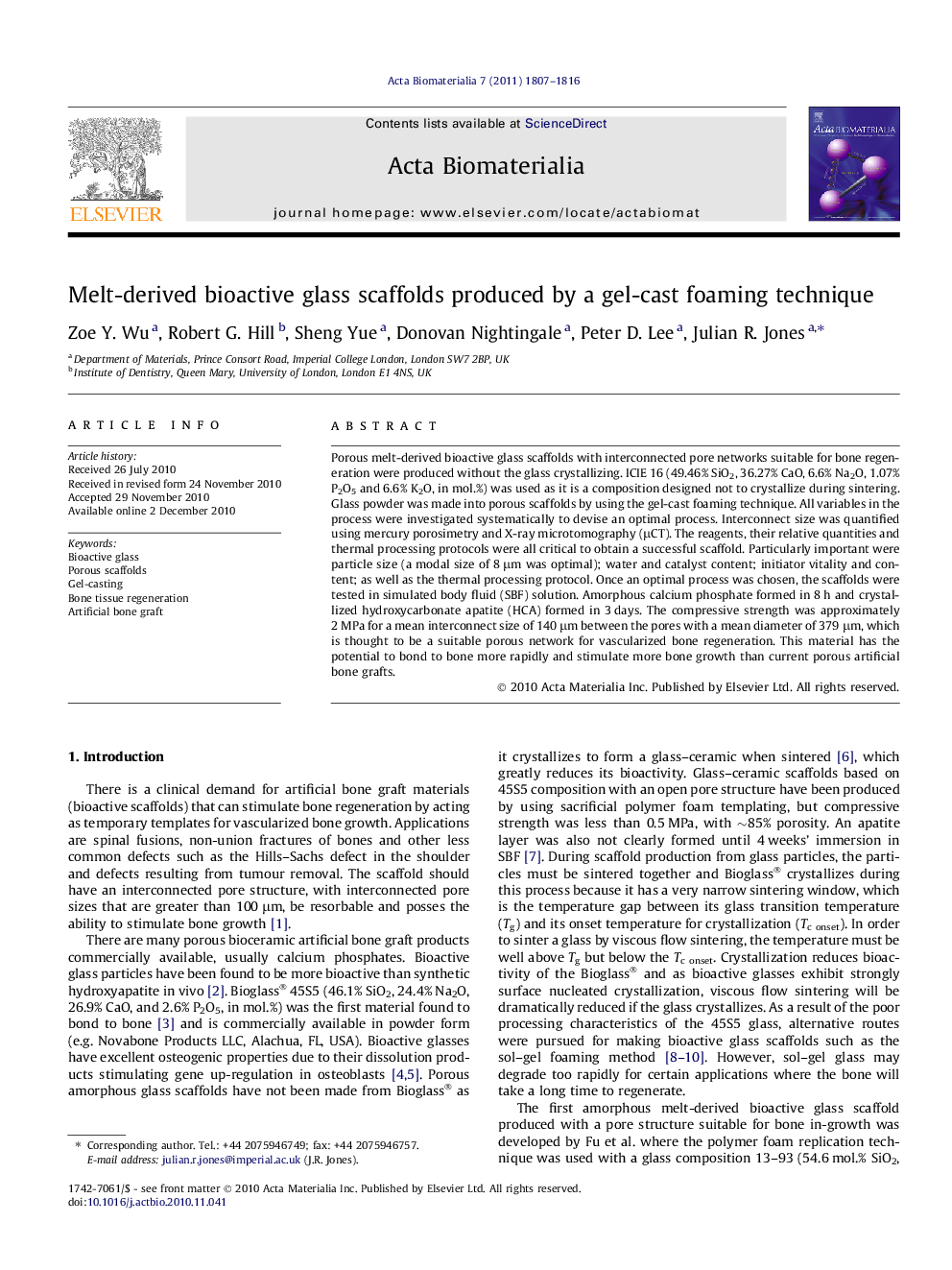| Article ID | Journal | Published Year | Pages | File Type |
|---|---|---|---|---|
| 10160310 | Acta Biomaterialia | 2011 | 10 Pages |
Abstract
Porous melt-derived bioactive glass scaffolds with interconnected pore networks suitable for bone regeneration were produced without the glass crystallizing. ICIE 16 (49.46% SiO2, 36.27% CaO, 6.6% Na2O, 1.07% P2O5 and 6.6% K2O, in mol.%) was used as it is a composition designed not to crystallize during sintering. Glass powder was made into porous scaffolds by using the gel-cast foaming technique. All variables in the process were investigated systematically to devise an optimal process. Interconnect size was quantified using mercury porosimetry and X-ray microtomography (μCT). The reagents, their relative quantities and thermal processing protocols were all critical to obtain a successful scaffold. Particularly important were particle size (a modal size of 8 μm was optimal); water and catalyst content; initiator vitality and content; as well as the thermal processing protocol. Once an optimal process was chosen, the scaffolds were tested in simulated body fluid (SBF) solution. Amorphous calcium phosphate formed in 8 h and crystallized hydroxycarbonate apatite (HCA) formed in 3 days. The compressive strength was approximately 2 MPa for a mean interconnect size of 140 μm between the pores with a mean diameter of 379 μm, which is thought to be a suitable porous network for vascularized bone regeneration. This material has the potential to bond to bone more rapidly and stimulate more bone growth than current porous artificial bone grafts.
Related Topics
Physical Sciences and Engineering
Chemical Engineering
Bioengineering
Authors
Zoe Y. Wu, Robert G. Hill, Sheng Yue, Donovan Nightingale, Peter D. Lee, Julian R. Jones,
